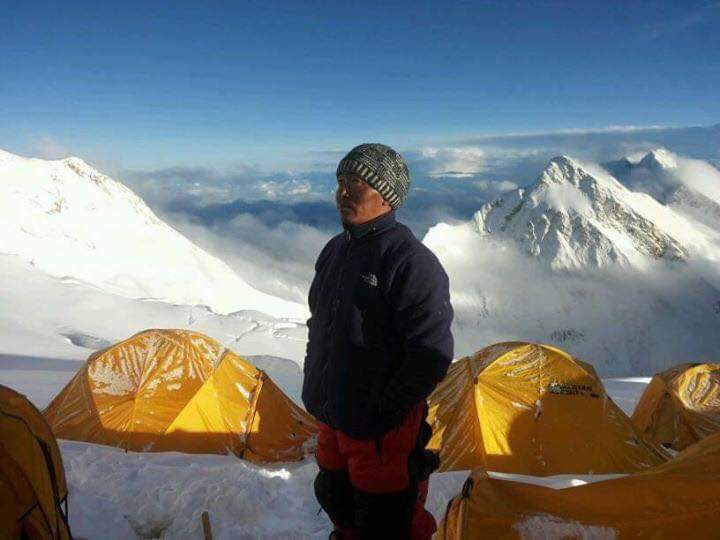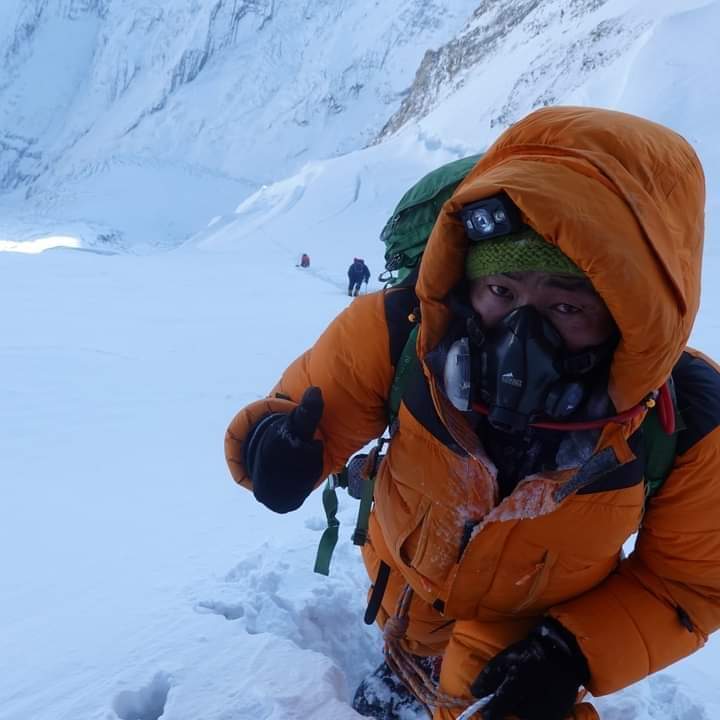- info@destinationholidaytrek.com
- +977-9768913779
- Gokarneshwor-6, Arubari, Kathmandu, Nepal
Ama Dablam Expedition (6,812m)
Ama Dablam, often referred to as the “Matterhorn of the Himalayas,” is one of the most stunning and prominent peaks in the Khumbu range of eastern Nepal. This majestic, ice-clad granite pyramid rises dramatically, captivating climbers and trekkers alike along the iconic trail to Everest Base Camp.
Highly coveted by mountaineers, Ama Dablam is renowned for its striking appearance and technical challenges. The expedition starts in Kathmandu, where participants explore UNESCO World Heritage Sites before flying to Lukla. From there, the trek winds through the breathtaking Everest trail, setting the stage for the ultimate ascent of Ama Dablam.
Standing at 6,812 meters (22,349 feet) and located just 20 kilometers (12 miles) from Everest, Ama Dablam is considered one of the most visually impressive mountains in the world. Whether undertaken as a standalone challenge or as preparation for a larger expedition, such as Everest, it offers a unique mountaineering experience. Many climbers regard summiting Ama Dablam as an essential achievement in their mountaineering journey.
The climb is moderately technical, involving snow, ice, and rock, surrounded by awe-inspiring views of the Himalayan landscape. Its vertical ridges and hanging glaciers present a captivating yet approachable challenge for experienced climbers.
The mountain derives its name from its distinctive form. “Ama,” meaning mother, reflects the long ridges resembling protective arms, while “Dablam” refers to the pendant traditionally worn by Sherpa women, symbolized by the hanging glacier beneath the summit.
Prerequisites For Ama Dablam Expedition
Climbers attempting Ama Dablam should meet specific requirements, including experience on peaks above 6,000 meters and multi-pitch climbing proficiency. Examples of suitable preparatory climbs include:
– Lobuche East, Island Peak, or Chulu West
– Khumbu Three Peaks expeditions
– Cholatse, Aconcagua, or Mont Blanc
– Technical climbing experience on grades 5.9+ to 5.10 (a, b, c) for both rock and ice
This expedition promises an unparalleled adventure for those ready to embrace the technical challenges and sheer beauty of one of the Himalayas’ most iconic summits.
What Makes Ama Dablam Famous?
The majestic pyramid of Ama Dablam is celebrated as one of the world’s most breathtaking and iconic peaks, standing alongside legendary mountains like the Matterhorn and Khan Tengri.
While not the tallest in the Himalayas, Ama Dablam captivates climbers with its unparalleled beauty and striking aesthetics, making it a dream destination for mountaineers. The journey to its summit offers mesmerizing views, rewarding climbers with an unforgettable visual experience.
At 6,812 meters, Ama Dablam may fall short of the region’s highest peaks, yet scaling it is considered a significant accomplishment within the mountaineering community. The ascent demands advanced technical skills in rock and ice climbing, posing challenges even to seasoned climbers, including Everest veterans and those who have summited other 8,000-meter peaks.
The South West Ridge of Ama Dablam is renowned for its accessibility, solid rock formations, and the exhilarating final ascent on steep, exposed snow slopes. This route is regarded as a world-class alpine climb, offering both technical challenges and breathtaking rewards.
Reaching the summit of Ama Dablam is not only a testament to a climber’s skill and determination but also an opportunity to witness panoramic views of the Everest group, Makalu, Cho Oyu, and countless other majestic peaks in the Himalayan range.
Ama Dablam Expedition General Route Overview
The South West Ridge of Ama Dablam presents an exhilarating challenge for seasoned and ambitious mountaineers. This standard route combines steep snow, ice, and rock climbing with exposed and thrilling sections, offering an unforgettable experience. To ensure safety and efficiency, fixed lines are used throughout the ascent.
The South West Ridge follows the historic path pioneered by Ward (UK), Bishop (USA), and Gill (NZ) during the mountain’s first ascent in 1961. This route provides a diverse and sustained climb, offering a balance of moderate and technical sections. Along the way, three high-altitude camps are strategically established to facilitate the ascent.
The climb to Camp 1 is relatively moderate, but the challenge intensifies as you ascend the narrow granite ridge toward Camp 2. Here, steep ice and snow slopes demand advanced technical skills. From Camp 3, climbers navigate around the hanging glacier, known as the Dablam, traverse a sharp snow arête, and cross a bergschrund between ice cliffs before making the final push to the summit.
After the rewarding experience of reaching the summit, the journey concludes with a descent back to base camp, leaving climbers with a profound sense of accomplishment and the memory of awe-inspiring views.
| Destination: | Nepal |
| Maximum Altitude: | 6,812 meters |
| Best Season: | Spring & Winter |
| Trip Grade: | Extreme Challenging |
| Group Size: | 1 – 15 people |
| Duration: | 30 Days |
Included
- Airport/Hotel/airport transfers
- 5 nights’ accommodation at 3 star hotel in Kathmandu on twin sharing basis with breakfast and all taxes
- Fly from Kathmandu – Lukla– Kathmandu and all your luggage to Ama Dablam Base Camp and back to Lukla
- Ama Dablam Expedition Government Royalty
- All camping facilities and meals during the expedition including a tent (one member = one tent) at Base camp.
- Kitchen and Dining equipment, Eating utensils, Shower Tents, Toilet Tent, Store Tent, etc
- All porter wages costs from Kathmandu to Ama Dablam base camp Base camp and back to Kathmandu
- All costs for support staff (guide, cook, kitchen helpers, and porters)
- Liaison officer, his fee, daily wages, equipment, clothing, accommodation, flight, meals, and insurance
- All our base camp staffs, porters, Climbing Sherpas, insurance, and their daily wages, and their equipment allowance.
- All breakfast, Lunch, Dinner, Tea, Coffee from during the trekking and Base Camp and till back to Kathmandu.
- Generator and Solar Panel at Base Camp
- National park fee
- Treking Guide and Base Camp Manager, his daily wages, insurance, equipment allowance, meals, accommodation etc
- Climbing Rope Fixing fee for Expedition operators Association of Nepal
- Satellite phone for Emergency use
- Necessary 0xyzen and mask regulator
- Breakfast, Lunch, Dinner, Tea, Coffee, Hot wate for shower at lhotse base camp
- Three time meal and tea, coffee during the trekking
- Sagarmatha National park fee. Khumbu Village Development Fee.
Excluded
- International flights and airport taxes.
- Visa fees.
- Bar bills and laundry.
- Travel insurance.
- Lunch and evening meals in Kathmandu.
- Tips for driver, guide, porter, BC staff and climbing Sherpas
- Successful Climbing Bonus for the Sherpa – (USD 1500 recommended)
- Personal Climbing Gear
Itinerary
Itinerary to Mt. Ama Dablam Expedition as follows:
01
Day 1 : Arrive Kathmandu
- Arrive Kathmandu and transfer to your hotel.
02
Day 2 – 4 : Kathmandu to Lukla Flight
- Fly to Lukla (2860m-9384ft) and trek to Phakding (2622m-8602t). Overnight in lodge.
03
Day 4 – 7 : Namche Bazar to Pangboche
- Trek from Namche to Pangboche (3930 m-12,890ft).
04
Day 8 :Trek from Pangboche to Mt. AmaDablam
- Trek to Mt. AmaDablam Base Camp (4600m-15,088ft).
05
Day 9-25 : Climbing Mount AmaDablam
- This time period is for climbing Mt. Ama Dablam
06
Day 26 – 27 : Back to Namche Bazar and to Lukla
- After Successful Expedition, heading back to Lukla
07
Day 28 – 30 : Flight From Lukla to Kathmandu
- Back to Kathmandu and transfer to Hotel
View On Map
Photo Gallery




